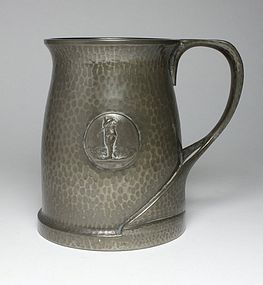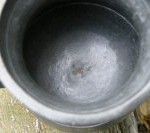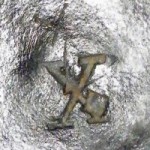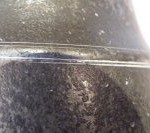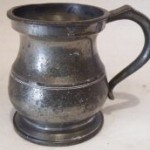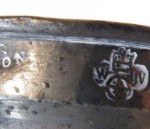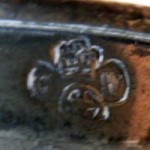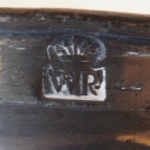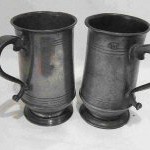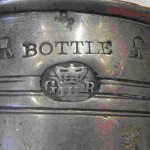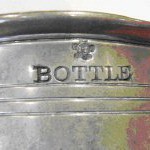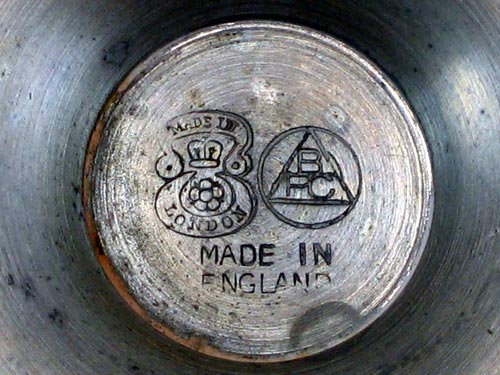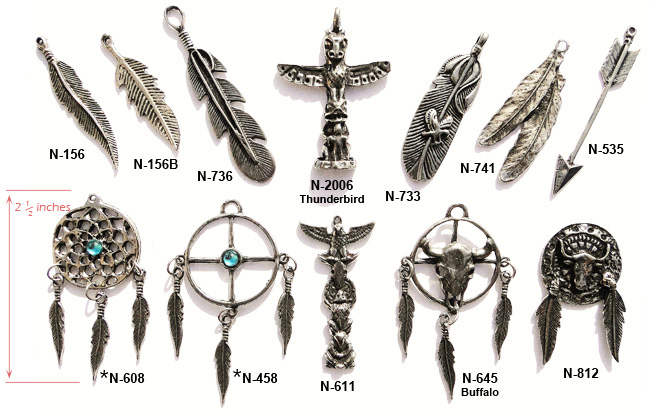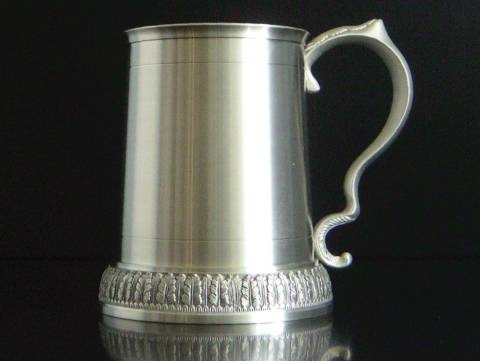Every collector has made mistakes and been caught out at some time, often more than once and it should not be considered a mark of shame, rather, experience!
Firstly, one needs to understand the difference between the terms:
A reproduction is a modern copy of a period piece following original styles and often using original production methods and materials. Sometimes, it is even a copy of an actual item. What is important is that it is not made to deceive and is marked accordingly. One problem is that an unscrupulous ‘faker’ may be able to erase or partially erase the mark making it much more difficult to distinguish from an original.
A forgery is a piece of modern pewter which is made specifically to deceive the purchaser. This could be achieved by a number of methods such as the creation of moulds from genuine items which then produce ‘cloned’ copies including all blemishes and wear marks; the use of fake dies of maker’s or other marks often combined with artificial ageing; etc. Many such items are made in continental Europe, especially Italy and Germany.
Fakes take different forms too, but the most common include using a legitimate, unmarked item and embellishing it with inscriptions or decoration, e.g. wrigglework or stamping it with a fake maker’s mark. Fakers may also take parts of two or more pieces to create a ‘marriage’ item and, with careful ageing and polishing techniques, many collectors are easily taken in.
Only experience of viewing and handling pewter can make the difference and even then there will be times of uncertainty. New collectors will be particularly surprised when they see ‘experts’ failing to agree on the authenticity of a specific item.
FAKES COMMONLY FOUND AMONGST PEWTER MUGS
And other marks.
In the middle to later 1900s (perhaps about 1940 to 1980), a quantity of pieces were either faked by having freshly created verification and other marks (or genuine old marks that someone had acquired) applied to either new pieces made in old molds or to old pieces of little value.
The purpose was to add value and deceive buyers in to paying more. A quantity were sent to the USA and sold in prestigious stores and by dealers.
The novice collector can take care by looking out for the features shown in the illustrations.
Those faking had certain often found habits –
1) The verifications are often spaced out around the rim, so as to appear fairly clearly.
2) The patina or surface is often mottled as though sponged with acid to create an aged effect
3) Pieces often carried the Y in a triangle mark with crosses above and below – these were likely made by Gaskell & Chambers using James Yates original molds at anytime from say 1900 up to the late 1970s.
It has been pointed out that I cannot be certain I am correct. This is true. I was not there.
If readers have additional information or will point out errors we will consider adding any such to this article.
- Photo shows the large X and more clearly the small X mark that G & C Put above or below the triangle(with Y inside
- Suggested that the surface shows an attempt to achieve aging possibly with acid
- A half Pint Pewter Mug likely made by Gaskell & Chambers in the mid 1900s from James Yates molds
- And this mark is far too old William IV 1830 – 1837
- And this mark is far too old George IV 1820 -1830
- And this mark is far too old. Interestingly 1826 not 25 is the date expected with the old mark below and so is an additional ‘feature’
- This label shows that this was part of a set of 9 (likely Gallon down) The date of 1886 is to deceive and partly to cover the seller…….. These labels are sometimes now sought after by collectors – as this typewriter type face is recognized.
- Should the buyer realize that this mark is far too old
A GOOD BOTTLE MEASURE with FAKED ADDED MARKS
Opinion One
The bottle measure was a curious thing. The piece is absolutely right for an 1870s Edinburgh bottle quart, and the first verification is visible just below the lip, being a typical Edinburgh Imperial period verification (that is, post-1826) – if that verification were less worn ,it would be seen to contain a date, which I’m sure would be in the 1870s. The BOTTLE mark is also completely right. But the GIV and GIIIR marks are anachronistic, and I have never seen that GIIIR mark before. Neither of those marks is in any way similar to other known Scottish verification marks, but the GIV mark is almost identical to that used by several Birmingham makers in the period 1826-30. So there is reason to be suspicious.. There is no doubt bottle capacity was restricted to the 1870s, when a few sets of standard measures were issued to weights and measures inspectors, including a couple of sets for Edinburgh. The capacity was outlawed in 1878.”
Opinion Two
The George III mark is as bent as ‘a five bob note’….
Conclusion – a genuine Scottish Bottle Measure likely made by J Moyes (the last Edinburgh pewterer from about 1840 onwards) quite scarce in itself was decorated to improve its sale value by the addition of spurious and perhaps in themselves faked verification marks. So an attempt was made to make a reasonably scarce and valuable piece – more valuable.
PHOTOS OF THE PIECE REFERRED TO ABOVE – AND A GENUINE PIECE THAT HAS NOT BEEN TAMPERED WITH.
- Good to the left – dressed to sell to the right
- Added decoration – G IV and G111
- Good – 1877 mark
- Genuine maker’s mark, likely J Moyes, in bottle measure on right – suggesting an original well made bottle measure before (perhaps) being decorated…
A JAMES YATES MARK of Note.
The following ‘James Yates’ mark, was seen at J Smellies, Birmingham, is 20th century and may have been made as late as the 1970s! This is not necessarily made to deceive as it was more likely to be used in the marketing of a known and owned brand or trade name. But on finding it today what might a novice collector think?
The Y in a triangle conundrum.
The above illustration is found in Addenda to more Pewter Marks page 11 following 1970 references to Gaskell & Chambers Ltd of Solihull.
A number of people have commented on the marks found in Yates pots and measures or what are thought to be Yates pieces and the marks found inside what appear to be or are thought to be Gaskell and Chamber’s pieces. The marks believed to be associated with the Yates are numbers over a Crowned ‘X’ and those associated with Gaskell and Chambers consist of an ‘X’ with a triangle below containing a letter ‘Y’ and a geometric form.
The above quotation and more concerning the James Yates – Gaskell & Chambers connection can be found in a new article concerning
‘Marks Often Found – James Yates – Gaskell & Chambers’.
INFORMATION REQUESTED
There may be readers of this web site who have personal experience of the likely known faker back in the 1940s-1980s of the first shown piece. This web site would welcome any recollections – names of those writing in will be withheld on request.
As with any further knowledge in relation to the Bottle measure marking above and the ‘Carpenter’ plate in a following article.
EXTRA INFORMATION
Creating aged patina effect (where I guessed sponged with acid) I am told might have been done by dusting with an alkali powder and then sprinkling the acid on – the reaction providing the corroded look.
Another comment was to ask if – was all that work worth it for a very inexpensive late style of half pint?
The point was surely that as the ticket says this was but one piece of a 9 piece set (gallon down) – all matching (made to match!) and purporting to be from George IV’s time. Rare enough then for a good price as a matching surviving set of age – or so might have been thought.

